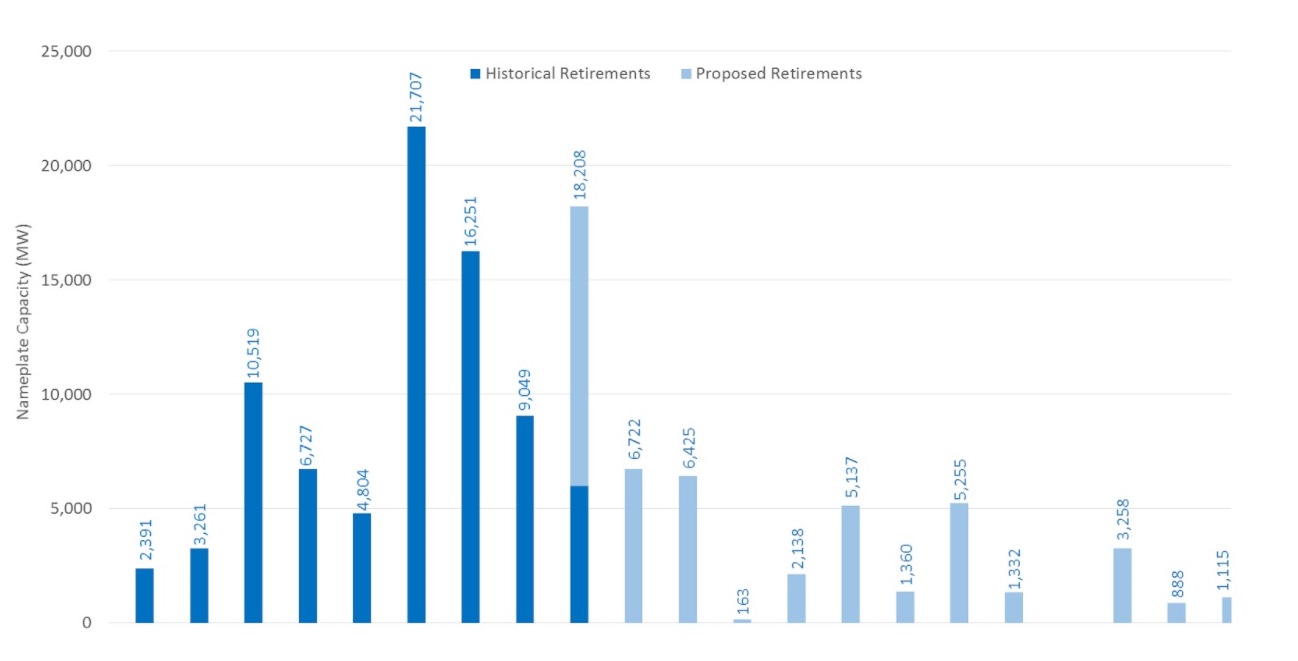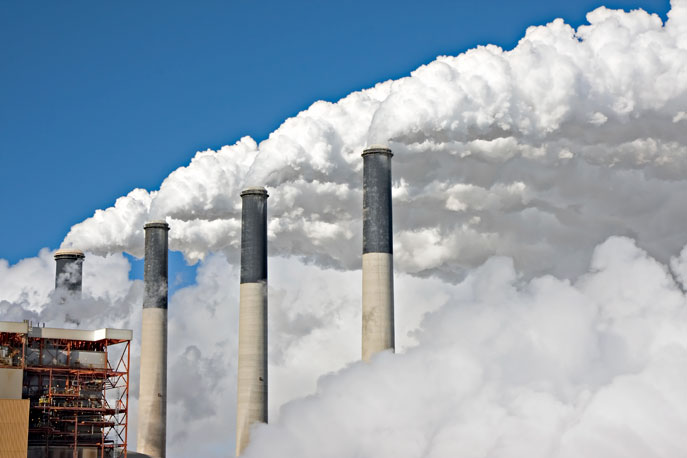While Donald Trump has been boasting about bringing back “beautiful clean coal” (about as real as a unicorn!), grassroots leaders and advocates have been busy continuing the work of moving the U.S. beyond coal to clean energy. From Texas to Pennsylvania to West Virginia, recent coal plant retirement announcements are part of a trend that adds up to one coal plant retirement every 16 days – the same pace as during the Obama years. Let’s take a closer look at the context for those announcements, and the highlights from the ground.
As you can see in the chart below, in the first two months of 2018 we’ve already retired more coal that we did in three of the Obama years, and we’re on track for our second biggest year of coal retirements ever:

U.S. coal retirements continue under Trump. Source - Sierra Club Beyond Coal Campaign.
In recent weeks, utilities have continued to announce they’re closing coal plants, not only because the economics don’t make sense, but also because of pressure from hard-working local residents who’ve had enough of the dangerous air and water pollution.
In February the massive Big Brown coal plant in Dallas, Texas, officially ceased operations. Big Brown is the nation’s single largest source of the deadly sulfur dioxide pollution that’s linked to asthma, heart attacks, and other severe health problems - not just the biggest coal plant source, but the biggest source, period. For Texas families and downwind communities as far afield as Illinois and Michigan, pollution from the plant is a matter of life and death. Families that fought this plant for years can now breathe easier.
In yet another step forward for clean air, two days later we announced an agreement to phase out coal at Pennsylvania’s Brunner Island coal plant, the single largest source of smog-forming pollution in Philadelphia. The settlement between the Sierra Club and Talen Energy states that the company will phase out coal burning at the plant, one of the largest polluters in the region since it came online in 1961, from May through September (ozone season) by 2023, and year-round by the end of 2028. This will help surrounding states meet the federal air pollution limits set by the Clean Air Act and will significantly reduce water pollution caused by coal ash at the site.
It is important to note that the plant is not fully retiring since it added the ability to burn fracked gas in 2016. The pollution issues addressed in the settlement are related to the use of long-standing use of coal at Brunner, and so the plant may still burn fracked gas. We will continue to drive clean energy solutions in Pennsylvania and across the country, with our work showing that from the wellhead to the power plant, gas and the fracking process used to extract it is toxic to our communities and the climate. This will be especially important as coal plants retire across the country, and we move to 100 percent clean energy. Fracking, and any use of fossil fuels, has never been nor will ever be anything other than an obstacle to environmental justice.
That same week, FirstEnergy Corp. announced plans to deactivate or sell the Pleasants Power Station in West Virginia by January 2019. FirstEnergy had attempted to shift the uncompetitive plant over to its subsidiary in West Virginia, but FERC denied the deal when West Virginia regulators attached enough conditions to kill it. The Pleasants Power Station announcement marked the 268th power plant, nationally, to announce plans to stop burning coal since 2010. The Sierra Club and allies had opposed this bailout for years, through grassroots organizing and formal interventions with regulators. We also opposed a larger Trump coal bailout that was denied by FERC, aimed at insulating this plant and others from market competition. Again, endless pressure by local activists pushing for clean air and clean water and against the transfer helped make this happen.
Meanwhile on February 15, the courts again ruled against another Trump attempt to take down clean energy - this time it was specifically on energy efficiency. The U.S. District Court for the Northern District of California ruled that the Trump administration illegally delayed important energy efficiency standards that will help protect American communities from dangerous pollution and save customers and businesses billions of dollars.
The national media has taken note of this momentum. Trump’s failure to revive coal, one year into his administration, has recently been covered by the New York Times, Washington Post, GreenTech Media, Think Progress, Reuters, CNBC, and more.
From day one, the Trump administration has done everything it can to stall, undermine, or scrap policies that put energy working families and public health first, and has instead done the bidding of fossil fuel billionaires. All of these victories I’ve listed come because of tireless activists - from legal teams to on-the-ground activists in each community. Each victory is a reminder that we can fight and win against Trump and billionaire corporate polluters, putting our families, communities, and health back at the center of decisions about energy in this country. And we aren’t slowing down.
